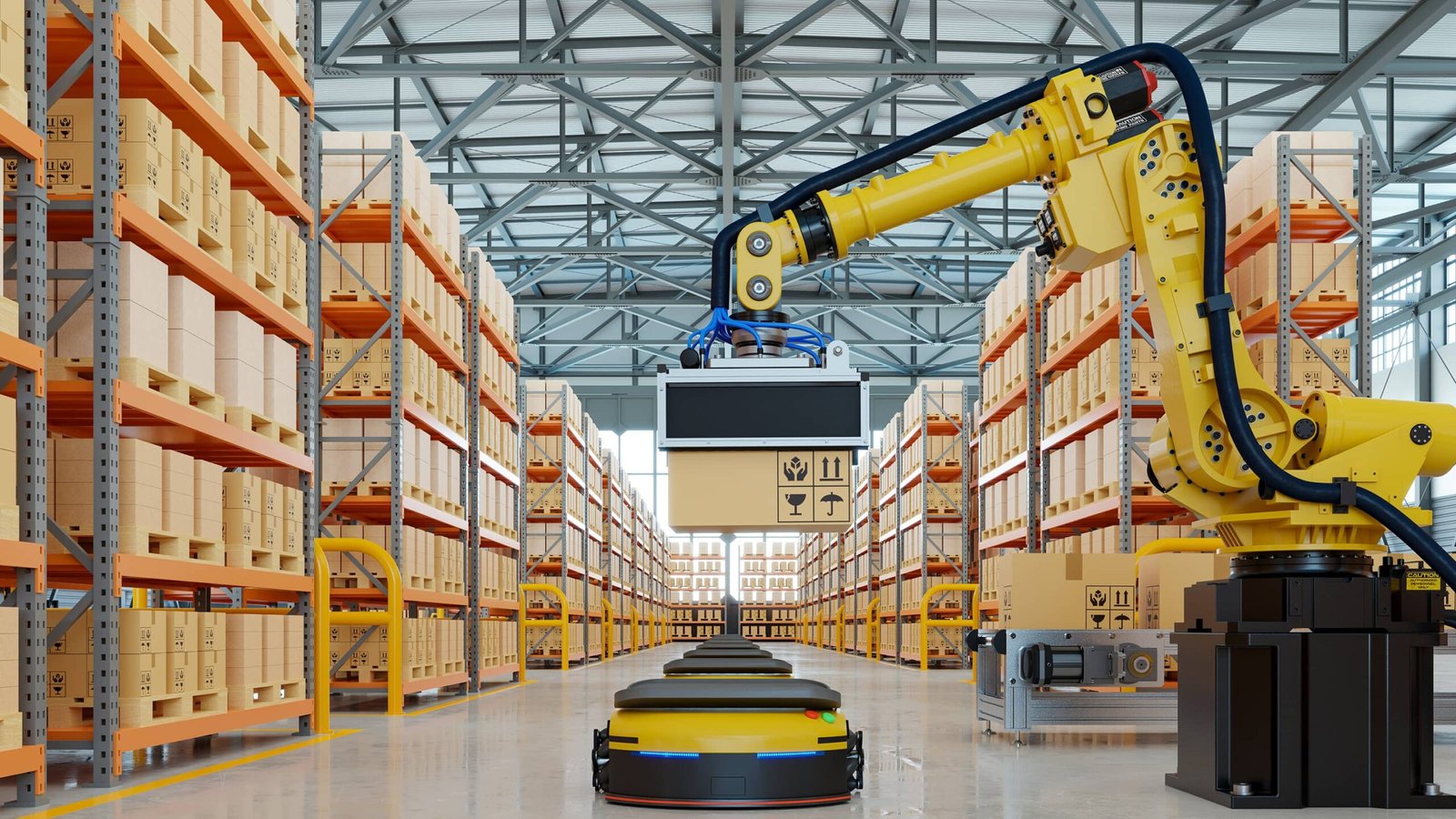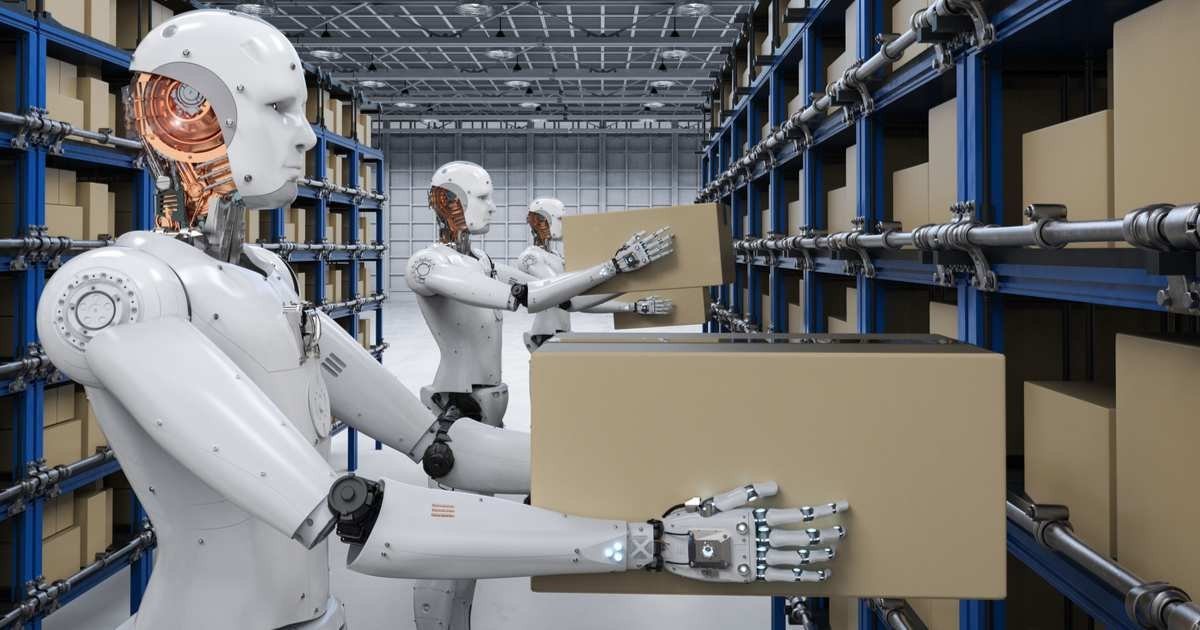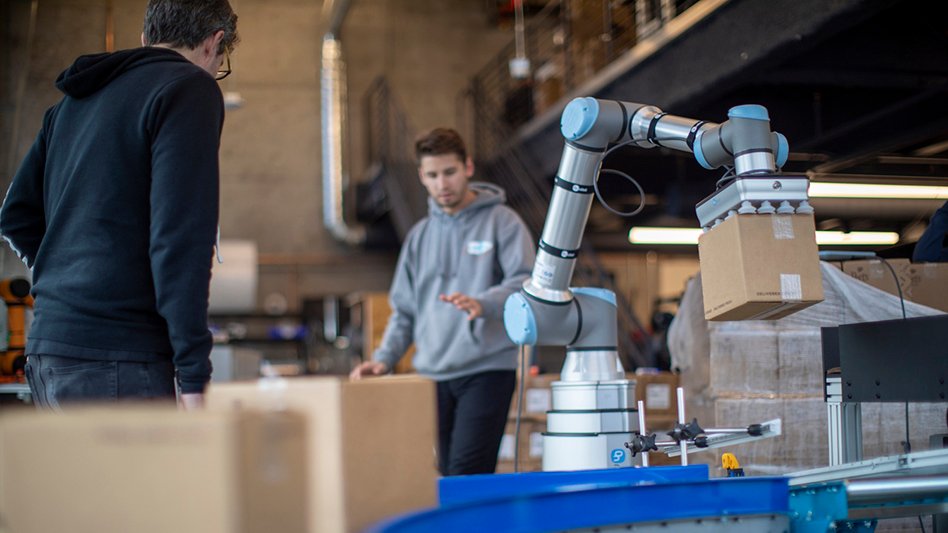
How do Vision Guided Robots help in logistics
Vision-guided robots offer several benefits in the logistics industry, enhancing efficiency and accuracy in various operations. Here are some key advantages:
- Vision-guided robots play a crucial role in revolutionizing the logistics industry by offering a myriad of benefits. Their exceptional capabilities in object detection and recognition enable them to accurately identify and sort various products, packages, and pallets, thereby significantly improving inventory management and enhancing order fulfillment processes. By leveraging advanced visual technology, these robots ensure seamless operations and optimal efficiency within warehouses.
- Moreover, the localization and navigation prowess of vision-guided robots are unparalleled. These autonomous robots rely on visual cues to navigate through warehouse environments, strategically planning their paths and avoiding obstacles with precision. This not only enhances operational speed but also ensures a safe working environment for both robots and human workers, ultimately contributing to increased productivity and streamlined logistics operations.
- In addition to their navigation skills, vision-guided robots excel in pick and place operations. Through meticulous visual data analysis, they can handle items of varying shapes and sizes with utmost accuracy, guaranteeing the precise picking and placement of goods within the warehouse. This level of precision and efficiency significantly optimizes the overall workflow, leading to faster order processing and improved customer satisfaction.
- Furthermore, the real-time inventory tracking capabilities of vision-guided robots are invaluable in fulfillment centers. By scanning barcodes and monitoring inventory movements, these robots facilitate efficient storage and retrieval of products, ensuring that items are always readily available for shipment. This real-time tracking not only minimizes errors but also enhances inventory accuracy, ultimately contributing to a more streamlined and effective logistics process.
- Ultimately, by taking over repetitive and monotonous tasks, vision-guided robots allow human workers to focus on more complex and strategic responsibilities that require creativity and decision-making. This collaborative approach between robots and humans not only increases overall productivity but also fosters a more dynamic and efficient work environment in the logistics industry. With their advanced capabilities and seamless integration into warehouse operations, vision-guided robots are truly shaping the future of logistics and revolutionizing the way goods are handled and processed.
The Impact of Labor Shortages in the Logistics Industry
The logistics industry plays a crucial role in the global economy, ensuring the smooth movement of goods from manufacturers to consumers. However, the industry is currently facing a significant challenge – labor shortages. With the increasing demand for logistics services and a shortage of skilled workers, companies are struggling to meet customer expectations and maintain efficient operations.
Labor shortages in the logistics industry can lead to delayed deliveries, increased costs, and decreased customer satisfaction. To overcome these challenges, companies are turning to AI-equipped robots to automate various tasks and optimize operations.
Benefits of Using AI-equipped Robots in Logistics
The integration of AI-equipped robots in the logistics industry brings numerous benefits. Firstly, these robots can operate 24/7 without the need for breaks or rest, ensuring continuous productivity. They can handle repetitive and mundane tasks, such as sorting and packaging, with high speed and accuracy, reducing the reliance on human labor.
AI-equipped robots also enhance efficiency by optimizing resource allocation. They can analyze vast amounts of data in real-time to identify bottlenecks in the supply chain and suggest improvements. This allows companies to streamline their operations, minimize costs, and improve overall productivity.
Additionally, these robots can adapt to changing demands and handle complex tasks with ease. They can navigate through warehouses, pick and place items, and even collaborate with human workers, complementing their skills and increasing overall efficiency.
Enhancing Efficiency and Accuracy with AI Technology
AI technology is revolutionizing the logistics industry by enhancing efficiency and accuracy. AI-equipped robots can utilize advanced algorithms and machine learning to optimize route planning, warehouse layout, and inventory management. By analyzing historical data and real-time information, these robots can make intelligent decisions to minimize travel time, maximize space utilization, and prevent stock outs or overstocking.
Moreover, AI technology enables predictive maintenance, ensuring that robots are always in optimal condition. By monitoring performance data and identifying potential issues in advance, companies can schedule maintenance tasks proactively, minimizing downtime and reducing the risk of unexpected breakdowns.
With AI-equipped robots, logistics companies can achieve higher levels of accuracy in tasks such as order fulfillment and inventory tracking. These robots can scan barcodes, verify product details, and update inventory systems automatically, eliminating human errors and improving data accuracy.

Addressing Safety Concerns and Human Error
Safety is a top priority in the logistics industry, and AI-equipped robots are designed to address safety concerns and reduce human errors. These robots are equipped with various sensors and algorithms that enable them to navigate through crowded warehouse environments safely. They can detect obstacles, adjust their speed, and avoid collisions, minimizing the risk of accidents.
Furthermore, AI technology can detect anomalies and identify potential safety hazards in real-time. For example, if a robot detects a spillage or a damaged package, it can immediately alert human workers or take appropriate actions to prevent further risks.
By reducing the reliance on human labor for physically demanding tasks, AI-equipped robots also contribute to the well-being of workers. They can handle heavy loads, operate in extreme temperatures, and perform repetitive motions without experiencing fatigue or injuries.
The Future of Logistics with AI-equipped Robots
The future of the logistics industry is closely intertwined with AI-equipped robots. As technology continues to advance, these robots will become even more capable, intelligent, and autonomous. They will be able to handle a wider range of tasks, adapt to dynamic environments, and interact seamlessly with other robots and human workers.
In the future, AI-equipped robots will play a crucial role in last-mile delivery, enabling faster and more efficient transportation of goods to customers’ doorsteps. They will be equipped with advanced navigation systems, aerial capabilities, and even autonomous vehicles, revolutionizing the entire delivery process.
Moreover, the integration of AI and robotics in the logistics industry will lead to the emergence of smart warehouses. These warehouses will be equipped with intelligent systems that can monitor inventory levels, optimize storage space, and automate order fulfillment. This will result in faster order processing, reduced costs, and improved customer satisfaction.
AI-equipped robots are revolutionizing the logistics industry with their advanced capabilities. Here are some examples:
- Autonomous Mobile Robots (AMRs): These cutting-edge robots are equipped with AI technology that allows them to efficiently transport pallets from depots to warehouses. With their autonomous navigation capabilities, AMRs can seamlessly maneuver through busy warehouse environments, avoiding obstacles and optimizing their routes for maximum efficiency. By taking on the task of pallet transportation, AMRs not only free up human workers for more complex tasks but also ensure a smooth and timely flow of goods within the logistics operation.
AI-Driven High Trucks: Imagine high trucks manned by AI technology, capable of taking on intricate tasks within logistics operations with precision and efficiency. These AI-driven high trucks are revolutionizing the way goods are moved within warehouses and distribution centers. By leveraging advanced algorithms and machine learning, these trucks can navigate through narrow aisles, pick up and drop off items with accuracy, and optimize their routes to minimize travel time. With the integration of AI technology, high trucks are becoming indispensable tools in streamlining logistics operations and increasing productivity.
Vision-Guided Robots: Utilizing AI-powered vision technology, these robots can autonomously move items around a factory with remarkable precision and speed. By seamlessly integrating computer vision with AI algorithms, these robots can identify objects, assess their surroundings, and navigate through complex environments with ease. Whether it’s picking up items from one location to another or organizing inventory on shelves, vision-guided robots are transforming the way materials are handled within manufacturing and logistics facilities. With their ability to adapt to changing environments and tasks, these robots are driving efficiency and productivity to new heights.
AI-Enabled Interfaces: These interfaces are revolutionizing maintenance tasks within logistics operations by simplifying lengthy procedures into quick and efficient adjustments. By harnessing the power of AI, maintenance tasks that once required hours of manual labor can now be completed in a fraction of the time. AI-enabled interfaces can analyze data, identify potential issues, and provide real-time solutions for maintaining equipment and machinery. By streamlining maintenance processes, these interfaces contribute to minimizing downtime, reducing costs, and ensuring the smooth operation of logistics facilities.
What are some examples of AI-equipped robots in logistics?
AI-equipped robots are revolutionizing the logistics industry with their advanced capabilities, transforming the way operations are conducted and enhancing overall efficiency. These robots are at the forefront of innovation, showcasing a range of impressive features that optimize processes and streamline workflows.
Autonomous Mobile Robots (AMRs) are a prime example of cutting-edge technology in action. These robots excel at transporting pallets from depots to warehouses with unparalleled accuracy and precision. By leveraging their autonomous navigation capabilities, AMRs navigate through bustling warehouse environments effortlessly, avoiding obstacles and optimizing routes for maximum efficiency. Their seamless integration into logistics operations not only frees up human workers for more strategic tasks but also ensures a smooth and timely flow of goods within the supply chain.
AI-Driven High Trucks represent a significant advancement in the logistics landscape. These high trucks, equipped with AI technology, are capable of taking on intricate tasks within logistics operations with unmatched efficiency. By harnessing advanced algorithms and machine learning, AI-driven high trucks navigate through narrow aisles, execute pick-up and drop-off tasks with pinpoint accuracy, and optimize routes to minimize travel time. With their integration of AI technology, these high trucks are indispensable tools in enhancing productivity and streamlining logistics operations.
Vision-Guided Robots stand out for their exceptional capabilities in object detection and recognition. These robots autonomously move items around a factory with remarkable precision and speed, thanks to their seamless integration of computer vision and AI algorithms. By identifying objects, assessing surroundings, and navigating through complex environments with ease, vision-guided robots revolutionize material handling within manufacturing and logistics facilities. Their ability to adapt to changing environments and tasks sets a new standard for efficiency and productivity in the industry.
AI-Enabled Interfaces are game-changers in simplifying maintenance tasks within logistics operations. By harnessing the power of AI, these interfaces streamline lengthy procedures into quick and efficient adjustments. Analyzing data, identifying potential issues, and providing real-time solutions for maintaining equipment and machinery, AI-enabled interfaces minimize downtime, reduce costs, and ensure the uninterrupted operation of logistics facilities. Their contribution to enhancing operational efficiency cannot be overstated, making them an essential component in the logistics ecosystem.
In conclusion, AI-equipped robots are reshaping the logistics industry with their advanced capabilities and innovative features. From autonomous mobile robots to AI-driven high trucks, vision-guided robots, and AI-enabled interfaces, these technologies are driving efficiency, productivity, and safety in logistics operations. Embracing the power of AI in logistics is key to staying ahead in a rapidly evolving industry landscape.

conclusion
In conclusion, AI-equipped robots are transforming the logistics industry by addressing labor shortages, enhancing efficiency, improving accuracy, ensuring safety, and shaping the future of logistics. As companies embrace advanced automation technology, they will be better equipped to meet customer demands, optimize operations, and stay ahead in a highly competitive market.
FAQ
How can AI help the logistics industry?
AI can help the logistics industry in a multitude of ways, revolutionizing operations and optimizing processes. By harnessing the power of artificial intelligence, logistics companies can benefit from enhanced efficiency, improved accuracy, real-time data analysis, predictive maintenance, and advanced route optimization. AI algorithms can analyze vast amounts of data to identify patterns and trends, enabling logistics companies to make informed decisions and streamline their operations. Additionally, AI can facilitate predictive maintenance by monitoring equipment performance and predicting potential failures before they occur, reducing downtime and maintenance costs. Furthermore, AI-powered route optimization algorithms can calculate the most efficient routes for deliveries, minimizing travel time and fuel consumption. Overall, AI is a game-changer in the logistics industry, paving the way for increased productivity, cost savings, and improved customer satisfaction.
How can robots help with logistics?
Robots play a crucial role in transforming the logistics industry by offering a wide range of benefits and enhancing various operations. These automated machines are designed to streamline processes, increase efficiency, and improve overall productivity within warehouses and fulfillment centers.
One of the primary ways robots help with logistics is through automation. By taking over repetitive and labor-intensive tasks, robots free up human workers to focus on more complex and strategic responsibilities. This collaborative approach between robots and humans not only increases operational efficiency but also leads to a more dynamic and agile work environment.
Moreover, robots excel in tasks such as picking, packing, and sorting, where their precision and accuracy significantly enhance order fulfillment processes. With advanced technology like vision-guided systems, robots can identify and handle items of varying shapes and sizes with utmost precision, ensuring that orders are processed quickly and accurately.
Additionally, robots contribute to improving safety within logistics facilities. By handling tasks that may pose risks to human workers, such as heavy lifting or navigating through hazardous environments, robots help reduce the likelihood of workplace accidents and injuries. This focus on safety not only protects employees but also leads to a more reliable and efficient operation overall.
Furthermore, robots can play a key role in inventory management by tracking and monitoring stock levels in real-time. By scanning barcodes, RFID tags, or utilizing other identification methods, robots ensure accurate inventory data, leading to better decision-making and optimized storage and retrieval processes.
In conclusion, robots are essential in modern logistics operations, offering a multitude of benefits such as increased efficiency, improved accuracy, enhanced safety, and optimized inventory management. By leveraging advanced technology and automation, robots are shaping the future of logistics and paving the way for a more streamlined and effective supply chain.
Will logistics be replaced by AI?
While AI-equipped robots are certainly revolutionizing the logistics industry, the question of whether logistics will be completely replaced by AI remains a topic of debate. It is undeniable that AI technology is transforming the way logistics operations are conducted, increasing efficiency, optimizing processes, and improving overall productivity. However, it is important to note that AI is not a perfect replacement for human workers in the logistics sector.
Human workers bring a level of adaptability, creativity, and critical thinking that AI technology may not fully replicate. While robots excel at repetitive and monotonous tasks, human workers are essential for handling complex and strategic responsibilities that require decision-making and problem-solving skills. The collaboration between robots and humans is key to achieving a balanced and effective logistics operation.
Furthermore, there are certain aspects of logistics that may still require human intervention, such as customer service, relationship management, and decision-making in unpredictable situations. While AI technology can analyze data and optimize processes, human touch is often necessary for providing personalized and empathetic customer experiences.
In conclusion, while AI-equipped robots are reshaping the logistics industry and enhancing efficiency, it is unlikely that logistics will be completely replaced by AI. The harmonious integration of AI technology and human expertise is essential for creating a dynamic, efficient, and customer-centric logistics operation. By leveraging the strengths of both AI and human workers, the logistics industry can continue to evolve and meet the demands of a rapidly changing market.
What is the purpose of robotics?
The purpose of robotics goes beyond just automation and efficiency in the logistics industry. Robotics serve as the driving force behind innovation, enabling companies to push boundaries, explore new possibilities, and revolutionize the way operations are conducted. By harnessing the power of robotics, businesses can unlock a world of potential, from streamlining processes and enhancing productivity to improving safety and optimizing resource utilization.
Robots are not just tools for completing tasks; they are catalysts for transformation. Their ability to handle complex and repetitive tasks with precision and accuracy frees up human workers to focus on more strategic and creative endeavors. Moreover, robots pave the way for advancements in technology, pushing the boundaries of what is possible and driving progress in various industries.
Beyond their practical applications, robotics also play a significant role in shaping the future of work. As automation becomes more prevalent, the workforce is evolving to adapt to the changing landscape. Robotics create opportunities for upskilling and reskilling, empowering workers to learn new skills and take on more fulfilling roles within the organization.
In essence, the purpose of robotics transcends mere functionality. Robotics embody innovation, progress, and the relentless pursuit of improvement. By embracing robotics, businesses can not only streamline their operations but also pave the way for a brighter, more efficient future.
I hope this article was helpful for more, check out our previous blog post by clicking here.

